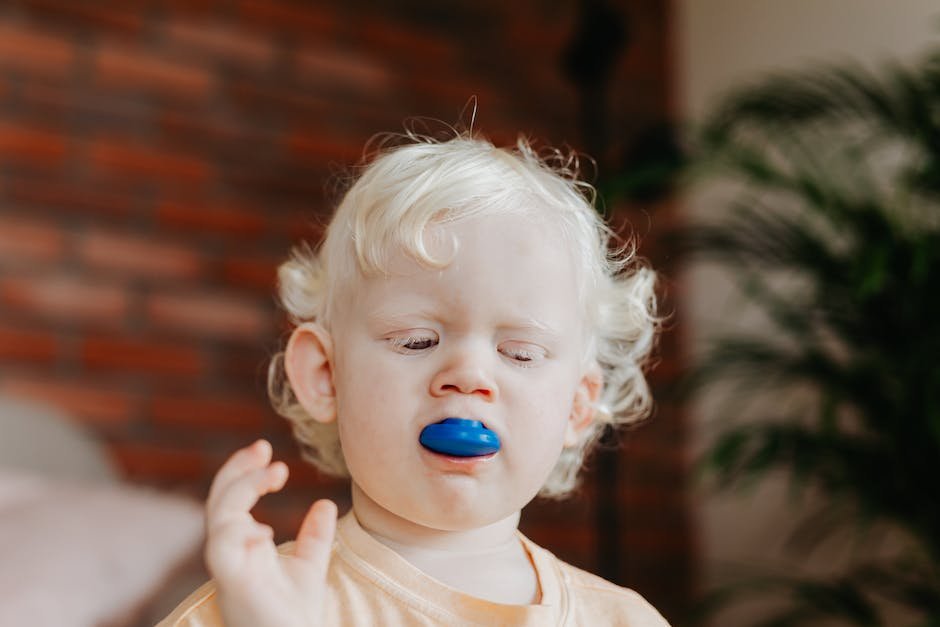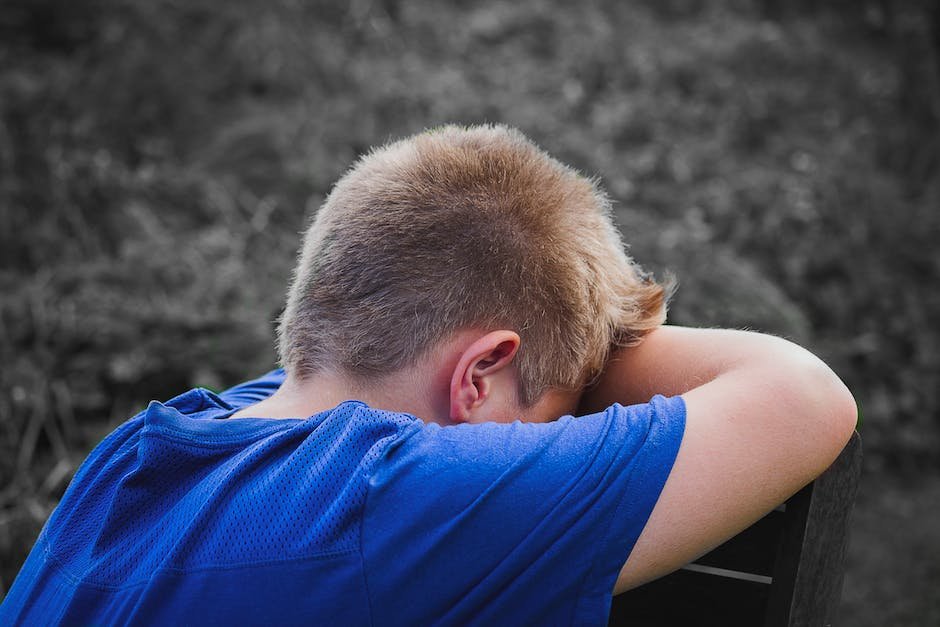
Autism, a neurodiversity that affects myriad facets of a child’s development, can manifest in many different behaviors, one of them being biting. It’s crucial to understand that when an autistic child bites, it’s not a sign of disobedience, but rather a communication of needs, a response to sensory overload, or a self-soothing mechanism. By deepening our understanding of the reasons behind biting, coupling it with effective communication strategies and techniques, incorporating behavior therapies, and adapting the environment, we can intercept this challenging behavior to nurture a more empathetic approach to management. This requires a holistic approach dedicated to the child’s development and learning, ensuring they feel secure and understood, both at home and school.
Understanding the reasons behind biting
Understanding Biting Behavior in Autistic Children and Strategies for Positive Change
Parenting is a journey where every day unfolds a new experience or lesson. For those of us who dedicate our lives to building our families, it is essential to understand the complexities of child behavior, particularly when it comes to children with Autism Spectrum Disorder (ASD). One such behavior parents and caregivers often struggle with is biting. Indeed, it can be challenging and distressing when a child with autism resorts to this behavior. But why does this happen, and what can be done about it?
The first vital step is to understand that biting, like any form of behavior, is a form of communication. For autistic children who might have difficulties expressing their needs or emotions verbally, biting can become a way to convey their messages. The reasons behind it may differ from one child to the next, and could range from sensory overload to frustration, anxiety, or a way to seek attention.
Autistic children may also bite due to sensory-seeking behavior. Often, our kiddos with ASD have different sensory experiences than other children. For them, biting might bring a unique sensory input that is calming, comforting, or simply enjoyable. It’s not always as menacing or aggressive as it appears – merely a coping mechanism.
Moreover, anger or frustration can trigger biting in autistic children. Imagine for a moment being unable to express yourself or communicate when you’re upset, uncomfortable, or in need of something. Frustrating, right? For some autistic children, this sense of powerlessness often results in behaviors like biting.
Lasty, autistic kids may use biting as a way of gaining attention. Children necessitate human interaction and attention, particularly from their parents and caregivers. If an autistic child feels neglected or disengaged, they may resort to biting as a method to draw attention to their needs.
Although biting can be a frustrating response to manage, there are strategies parents and caregivers can adopt. By offering alternate forms of sensory input, such as chewable toys, parents can divert this behavior. Additionally, by being observant and attentive to specific triggers or patterns of biting, a proactive approach can be taken to prevent situations that might provoke it.
In scenarios where biting is due to a need for attention, providing regular, structured interactions and attention to the child can reduce the need for them to engage in negative behavior for it.
It’s also critical to engage with professionals, like therapists or special educators, to equip yourselves with a more strategic plan personalized to the child’s needs. Remember, every child is unique, and these strategies might need to be customized to suit your little one’s individual needs.
In the journey of parenting an autistic child, biting can be a navigational challenge. But remember, understanding the “why” behind this behavior is the start to managing and proactively adapting to it. Most importantly, remember that you’re not alone in this journey. By engaging with a community of parents, caregivers, and professionals, finding a solution becomes a communal goal. This shared effort is just one more testament to the strength, resilience, and dedication of the family-building community. So let’s keep learning, sharing, and growing together.

Communication strategies and techniques
Discovering Effective Communication Techniques to Curb Biting in Autistic Children
Equipped with an understanding of why biting occurs in autistic children, the real question becomes how to address this behavior and replace it with healthier forms of self-expression. Communication is key here, but it’s essential to acknowledge that ‘communication’ with an autistic child might look different from what we’re usually used to. As parents and caregivers, our task is to connect with them in a manner resonating best with their unique abilities.
One powerful tool is Non-verbal communication, which often holds more weight with autistic children than verbal expression. Encouraging the use of sign language or visual aids can be enormously beneficial for children struggling with verbal communication. For instance, pictorial cards with symbols relating to ‘pain‘, ‘anxiety‘, or ‘overwhelm‘ could allow the child to express their feelings without resorting to biting.
Creating a calm and comfortable environment can also make a big difference in managing biting behavior. Reducing sensory stressors, such as loud noises, bright lights, or chaotic situations, can help lower the incidences of biting provoked by a sensory overload. Also, providing a quiet, private space for the child to retreat to can act as a refuge when stress triggers start to mount.
Communication and consistency go hand in hand when we’re dealing with sensitive behaviors. It’s crucial to respond the same way each time biting happens. This could involve a firm, gentle enunciation of “We don’t bite,” followed by redirection to a more acceptable behavior or activity. Regularity in our responses can provide a sense of structure and predictability that many autistic children find comforting.
Implementing the right incentives can be beneficial too. Positive reinforcement always works wonders with children! Rewarding non-biting behavior with praise or a small reward can motivate autistic children to seek alternatives to biting. However, one must remember that the incentive should align with the child’s interests.
Technology could prove an effective ally in this mission too. There are numerous apps catering to autistic children that provide games and activities designed specifically for skill-building in communication, emotional recognition, and stress management. With this fun and interactive approach, children feel more engaged in their learning process and stay motivated in their efforts to curb unwanted behaviors.
Creating a biting action plan can offer clarity and guidance during those tense moments when biting occurs or is prone to occur. The plan may include strategies tailored to the child’s unique needs, along with steps to be taken in managing the situation effectively.
Education about autism, for siblings and other family members, can encourage a better understanding of the reasons behind such behaviors and foster a more supportive, empathetic environment for the child.
Remember, open hearted communication with other family members, professionals, and the larger caregiving community will often present fresh perspectives and previously unconsidered strategies for managing biting behavior in autistic children.
Parenting an autistic child isn’t one-size-fits-all. It’s a journey filled with its unique challenges and moments of triumph. Successfully addressing biting behavior encompasses more than just curtailing an act; it’s about understanding, empathizing, and communicating with your child by stepping into their shoes and seeing the world through their eyes.

Role of behavior therapy in managing biting
Behavior Therapy: A Vital Tool in Managing Biting in Autistic Children
Behavior therapy, especially Applied Behavioral Analysis (ABA), has emerged as a successful technique that can be incredibly helpful in managing biting scenarios with autistic children. ABA is a scientifically validated approach that encourages positive behaviors and discourages negative ones by leveraging environmental changes.
In the case of an autistic child who uses biting as a communicative or sensory-seeking outlet, behavior therapy introduces a whole new dimension of understanding into their world. Instead of focusing on the biting, therapists concentrate on the triggers and communication deficits behind the behavior, bringing about behavioral changes in a positive and sustainable way.
A crucial part of this strategy is identifying the purpose that biting serves for the child. Once understood, the child can then be taught more appropriate, substitute behaviors. For instance, if biting is a response to frustration due to difficulty in verbal communication, speech therapy could be incorporated to boost their communication skills.
Creating a soothing environment is essential because it fosters consistency, a significant element in nurturing positive behavior changes. Calm surroundings mitigate the symptoms of sensory overload, reducing the probability of biting episodes. Hence, maintaining a predictable and comfortable environment can immensely influence a child’s behavior.
The use of non-verbal communication methods, such as visual aids, sign language, or modified gestures, can also play a key role in overcoming communication challenges. Technology and certain apps can be harnessed to facilitate this learning process. By enabling children to share their feelings and needs effectively, we eliminate the need for biting as a form of expression.
Positive reinforcement forms the foundation of behavior therapies. Celebrating success and accomplice can encourage children to continue using and developing new skills. An incentive here doesn’t necessarily mean a physical reward. It could be as simple as an appreciative gesture, a word of praise, or a loving smile.
Creating an individualized ‘biting action plan’ aimed at the child’s unique traits and needs can prove highly beneficial. It might involve teaching the child relaxation techniques, integrating physical activities to reduce anxiety, or providing things to chew upon when sensory cravings are high.
While these strategies primarily focus on the child, educating other members of the family and community about autism is equally crucial. Normalizing autism helps create an acceptance-filled environment, which is essential for an autistic child to thrive.
Finally, a solid support system can often become a lifeline for parents and caregivers grappling with biting issues. Connecting with fellow caregivers dealing with similar issues can provide fresh perspectives, lightening the burden of care.
In essence, behavior therapy helps in managing biting in children with autism by empowering them with communication tools to express, nurturing a predictable environment, integrating positive reinforcements, and fostering a greater acceptance in the community. Remember, every child is unique and may respond differently – patience, love, and understanding are key in these journeys.

Environmental modifications in the home and classroom
Understanding the Environment’s Impact on Biting in Autistic Children
Trying to understand and manage a child’s biting tendencies, especially an autistic child, can be a challenging task for parents. However, changing the child’s environment can make a world of difference. This might seem like a daunting task, but with the right approach and understanding of environmental influence, it can be more manageable than it may seem at first.
The environment, seen and unseen, can have a significant impact on a child’s behaviors, including biting. Autistic children are often more sensitive to their environment. Hence, creating a soothing, predictable, and safe environment can help reduce sensory overload, which is often a major trigger for biting.
A relaxed and predictable environment has a calming effect on the child. Predictability can be established in many ways, such as maintaining a regular schedule, limiting sudden changes, and implementing familiar routines. Also, using calming colors in their space, incorporating sensory-friendly furniture, and creating designated quiet areas where the child can retreat when feeling overloaded are beneficial strategies.
Many times, biting tendencies are heightened in noisy, cluttered, or chaotic spaces. Environments that are visually calm, well-organized, and free of excessive stimuli can help reduce the stress and anxiety that often lead to biting. Rotating toys and limiting the number of play items available at any given time can also help reduce overwhelming feelings.
While the immediate physical environment plays a crucial role, it’s also important to consider the social environment. Encouraging supportive, understanding relationships both within and outside the immediate family will help the child feel more secure and less likely to resort to biting as a communication tool.
Naturally, every child is different and what works for one child might not work for another. This is particularly true for autistic children. By observing the child and noting different environmental factors influencing their behavior, parents can modify the environment adaptively according to the child’s specific needs. Routine evaluations of the environment and the child’s response to changes will ensure that the adjustments are producing positive results.
Introducing behavior therapy, like Applied Behavioral Analysis (ABA), can augment these environmental adjustments. ABA is a well-recognized intervention for children with Autism Spectrum Disorder (ASD) that focuses on improving specific behaviors, including social skills, communication, and academics, and decreasing problematic behaviors like biting.
In any intervention plan, it’s indispensable to understand that behaviors, including biting, serve a purpose for the child. By identifying these triggers and responding with more ‘appropriate’ substitute behaviors, parents can slowly change the child’s reaction to environmental stimuli.
Technology can be a powerful ally in this journey too. Numerous applications offer valuable resources for building communication skills, which can help manage and eventually reduce biting tendencies.
Through consistent, strategic changes, the environment can be a powerful tool in managing biting behavior in autistic children. Remember to keep patient, remain consistent, and more importantly, know that the journey of managing biting tendencies is more of a marathon, not a sprint. You’re not alone; reach out to the community, engage with professionals, and remember to take care of yourself too.

Providing alternatives to biting
Exploring Safe and Comforting Toys as Alternatives to Biting
In the big and sometimes overwhelming world of a child with autism, having safe and comforting toys can become an effective, tangible solution to curb biting behavior. Everyone needs an outlet for frustration or anxiety, and children are no different. Providing them with a safe way to express these feelings can play a vital role in reducing biting instances.
Consider chewelry, which is a mixture of jewelry and chewable toys, providing a safe, non-toxic, and stylish alternative to biting. Designed with soothing textures, these accessories can be a fashion statement while still serving a practical purpose of giving the child a safe place to direct their sensory needs.
Moreover, introducing “comfort toys” or “transitional objects” often condemned as “security blankets” can be another beneficial approach. These toys can be particularly comforting during periods of change or stress, reducing a child’s inclination to bite. They can also fulfill sensory needs due to their tactile comfort, providing an alternative focus for sensory seeking behaviors.
Modeling Appropriate Responses During Interactions
Another effective strategy in addressing biting is through observing and interacting with peers who display appropriate behavior during play sessions. Children often learn better from their peers than from adults. By engaging your child in activities with children who are good role models and who don’t have biting tendencies, they will begin to adopt these behaviors in their routine.
Scheduling Playdates and Social Interactions
Arrange frequent playdates and social interactions that involve sharing, taking turns, and enforcing basic etiquette. Children often resort to biting when they can’t express their needs, wants, or frustrations verbally. However, through observational learning and hands-on experiences with peers, children can gradually learn better ways of expressing their feelings during different scenarios.
Adult Supervised Group Activities – Providing Guidance
Adult supervised group activities can also help children learn social skills and manage their behaviors more effectively. Adults can contribute by providing real-time comments and guidance on the children’s interactions, teaching children how to respond appropriately in different situations, and how to manage their feelings without resorting to biting.
Teaching and Reinforcing Empathy
Empathy is a crucial skill that can help children understand the impact of their actions on others. By teaching kids to recognize and respect the feelings of others, they can become more aware of the consequences of biting. Picture books, puppet play, role play, and social stories can be used to explain the concept of empathy and teach children how to treat their friends.
In conclusion, tackling biting tendencies in autistic children requires a compassionate and understanding approach, coupled with practical strategies like the ones mentioned here. It’s a journey that may be filled with few setbacks, but always remember – perseverance is the key in this beautiful process of helping your little one grow and thrive. Happy parenting!

Embarking on a journey to mitigate biting behaviors in autistic children necessitates profound empathy and patience. As we have explored and understood, biting is not a disciplinary issue, but a cry for help, either to communicate unmet needs or to self-soothe amidst sensory overload. Strategies, such as enhancing communication skills through visual aids or sign language, implementing behavior therapies like ABA, modifying home and school environments to be nurturing and calming, and supplying alternatives to biting, can offer profound assistance. Every child deserves to be understood and respected in their unique ways of interacting with the world. Let us continue to cultivate this understanding, to foster a nurturing, inclusive environment for our autistic children to bloom.




